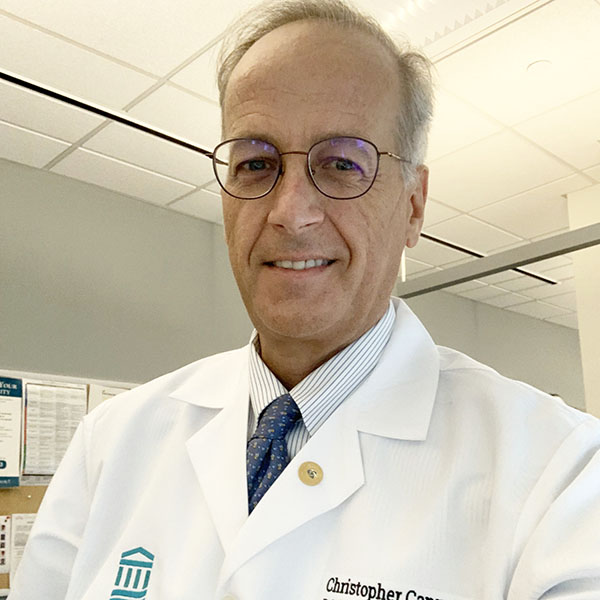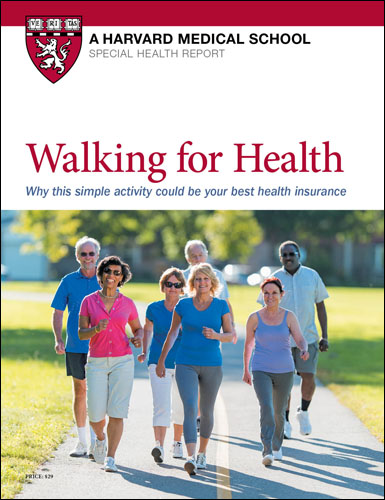Why you should "Walk with a Doc"
These free, physician-led walks — available in 560 locations throughout the United States — offer benefits beyond boosting physical activity.
- Reviewed by Christopher P. Cannon, MD, Editor in Chief, Harvard Heart Letter; Editorial Advisory Board Member, Harvard Health Publishing

You know that walking helps your heart. So does spending time with other people, being outside in nature, and learning about ways to improve your health and well-being from a professional. Want to get all four at once? Show up at a Walk with a Doc event.
Launched in 2005, this nonprofit organization sponsors free, doctor-led walks in mostly outdoor venues (usually public parks) across America. Today, Walk with a Doc is in 34 countries worldwide, including 560 communities around the United States. In surveys and focus groups, participants give the program high marks. Nearly all of the responders — 96% — say they strongly agree that Walk with a Doc has helped them lead a healthier lifestyle, according to a 2020 article in Current Cardiology Reports co-authored by Walk with a Doc founder Dr. David Sabgir.
The program's initial inspiration was to encourage people to be less sedentary. But the informal teaching that happens before and during the walks is a boon for patients and doctors alike, says cardiologist Dr. Simin Lee, associate physician at Harvard-affiliated Brigham and Women's Hospital. "In our current health care system, most of the care is compressed into a short office visit," she says. Walk with a Doc gives physicians time to discuss important health topics — such as exercise, diet, and stress management — in greater depth. Dr. Lee started the Walk with a Doc chapter in Jamacia Plain, the Boston neighborhood bordering the Longwood Medical Area, which is home to Harvard Medical School and many of its affiliated medical institutions.
Walking and talking
"Most of the chapters do monthly walks, but I wanted to encourage continuity and habit formation, so I did my walks every week," says Dr. Lee. The walks, which are currently led by her Brigham and Women's colleague Dr. Catherine Hwang, feature a 1.5-mile loop around Jamaica Pond every Wednesday evening at 5:30 pm. In general, weekday walks are usually about 30 minutes long; weekend walks may last 60 to 90 minutes.
About five minutes before starting the walk, the doctor speaks on various topics of interest, including those requested by the participants. For her initial talks, Dr. Lee focused on the recommended "dose" of exercise. During the walk, she demonstrated what moderate-intensity exercise looks like. "I'd tell people to notice how I could still talk in full sentences but that my breathing was a little heavier than when we were just standing around," she says.
During later walks, she taught interval training by cueing the group to pick up their walking pace for a few minutes, and to then pull back and return to their normal walking speed. Interval training is a good way to add variety to your workout and is especially helpful for improving cardiovascular fitness, she notes.
"Sometimes, it can feel futile to just rattle off some basic counseling about exercise during an office visit. It's so much more powerful when you can demonstrate it in person," she says. As much as we appreciate all the medications we have at our fingertips to manage cardiovascular disease, people really are interested in doing things for their health that doesn't involve taking pills, Dr. Lee says. She also did a series of talks about how exercise benefits so many chronic health conditions, including high blood pressure, diabetes, heart disease, dementia, and cancer.
Camaraderie and pleasant scenery
As Dr. Sabgir wrote in his article, most Americans are living lives that are sedentary, lonely, and not connected with nature. Many Walk with a Doc programs, including Dr. Lee's, have helped foster social connections and forged friendships among the participants. The walks she led often included 10 or more people, who would sometimes bring friends or family members along. "Creating a shared sense of community is a really important aspect of the program," she says.
So is the stress-relieving power of spending time in nature, which has become less and less common. Research suggests that over half of all Americans spend fewer than five hours outdoors each week. "In our increasingly digital world, where people spend a lot of time inside in front of screens, it's just lovely to be outside to get fresh air and witness a beautiful sunset and the changing seasons," says Dr. Lee. For more information about Walk with a Doc, including how to find a location near you, go online to www.walkwithadoc.org.
Photos courtesy of Walk with a Doc
About the Author

Julie Corliss, Executive Editor, Harvard Heart Letter
About the Reviewer

Christopher P. Cannon, MD, Editor in Chief, Harvard Heart Letter; Editorial Advisory Board Member, Harvard Health Publishing
Disclaimer:
As a service to our readers, Harvard Health Publishing provides access to our library of archived content. Please note the date of last review or update on all articles.
No content on this site, regardless of date, should ever be used as a substitute for direct medical advice from your doctor or other qualified clinician.
















